
Statue of Maximilian II, King of Bavaria, in Front of the Old Palace in the Center of Old Town
The Residenz (German: [ʁesiˈdɛnts], Residence) in central Munich is the former royal palace of the Wittelsbach monarchs of Bavaria.The Residenz is the largest city palace in Germany and is today open to visitors for its architecture, room decorations, and displays from the former royal collections.. Plan of the Residenz. The complex of buildings contains ten courtyards and displays 130 rooms.
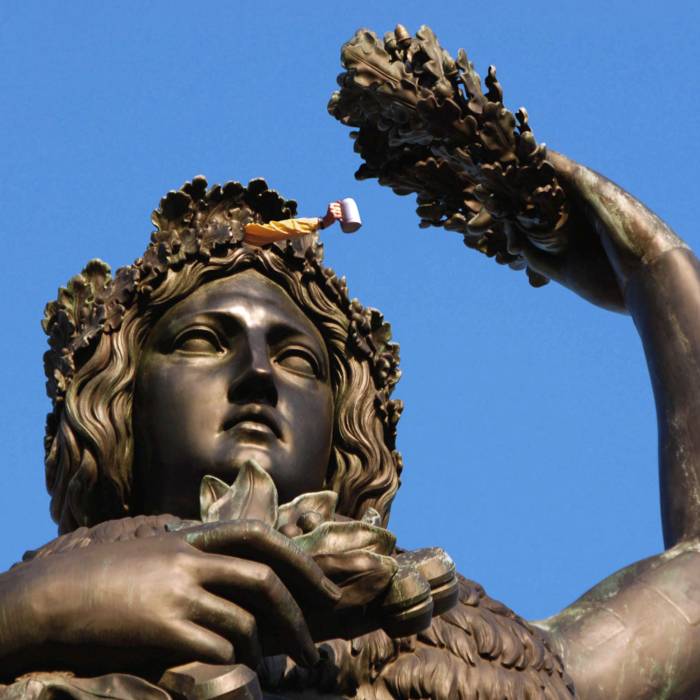
Bavaria statue simply Munich
The Hall of Fame and Statue of Bavaria are a set of monumental buildings that sit on a hill at the west end of the Theresienwiese, Munich. Around the 18-meter-high bronze statue of Bavaria is the Hall of Fame, which contains a number of busts of significant Bavarians, and was built to 'acknowledge fame and service to Bavaria.'

Visiting the Bavaria Statue in Munich How to get to the Ruhmeshalle
217 This statue of Bavaria in Munchen is the earliest bronze statue of the modern era, commissioned by King Ludwig I in 1837 to crown the Bavarian hall of fame. It was also designed to showcase.
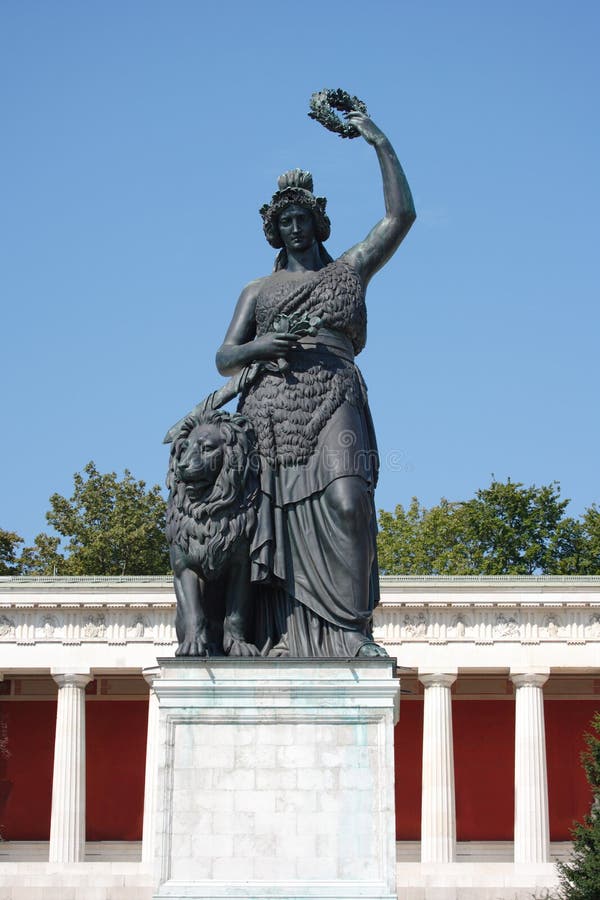
Bavaria statue munich stock image. Image of culture, column 3210867
The Bavaria statue is a masterpiece and a technical achievement because of the statue's sheer size and the fact that it is entirely cast out of bronze. It was designed by Ludwig Schwanthaler and cast by J. B. Stiglmair and his nephew Ferdinand von Miller. The statue was assembled, unveiled and dedicated in 1850.

Munich, Bavaria Statue Statuen, München bayern, München
Bavaria is framed by the Ruhmeshalle (Hall of Fame) displaying busts of the state's leading lights. The hall's three wings are home to the busts of about 100 famous Bavarian leaders, artists and scientists. It was a boys' club up until 2000, when busts of actor Clara Ziegler and writer Lena Christ were added.

Bronze statue of Bavaria, Munich, Upper Bavaria, Bavaria Stock Photo Alamy
Address Theresienhöhe 16 80339 München Opening hours April-6 October: 9 am-6 pm last entry: 5.30 pm open daily We ask groups to call and announce their visit: 0162 4121726 During the Oktoberfest the Bavaria is open until 8 pm, the Hall of Fame is closed for safety reasons. We ask that school groups visit between 9 and 11 am only during this time.

Statue Of Bavaria Stock Photo Download Image Now Munich, Theresienwiese, Antique iStock
September 22, 2023 by Paul If you have been to the Oktoberfest in Munich Germany, you will have come across the mighty Lady Bavaria Statue. Learn about this intriguing, not to miss Bavaria monument and plan your visit. Table of Contents 🗽 What is the Bavaria Statue? 📕 Fun Facts 🧭 How to visit the Bavaria Statue? 🚈 Getting There

Statue of bavaria stock image. Image of history, antique 28518981
Share Enthroned at an impressive height of 18 metres, Bavaria, patroness of the Bavarian state, presides over Munich from the edge of Theresienwiese. The monument, the first colossal statue to be made entirely of bronze since the classical period, is a true feat of engineering. The Bavarian King Ludwig I commissioned the monumental statue in 1837.
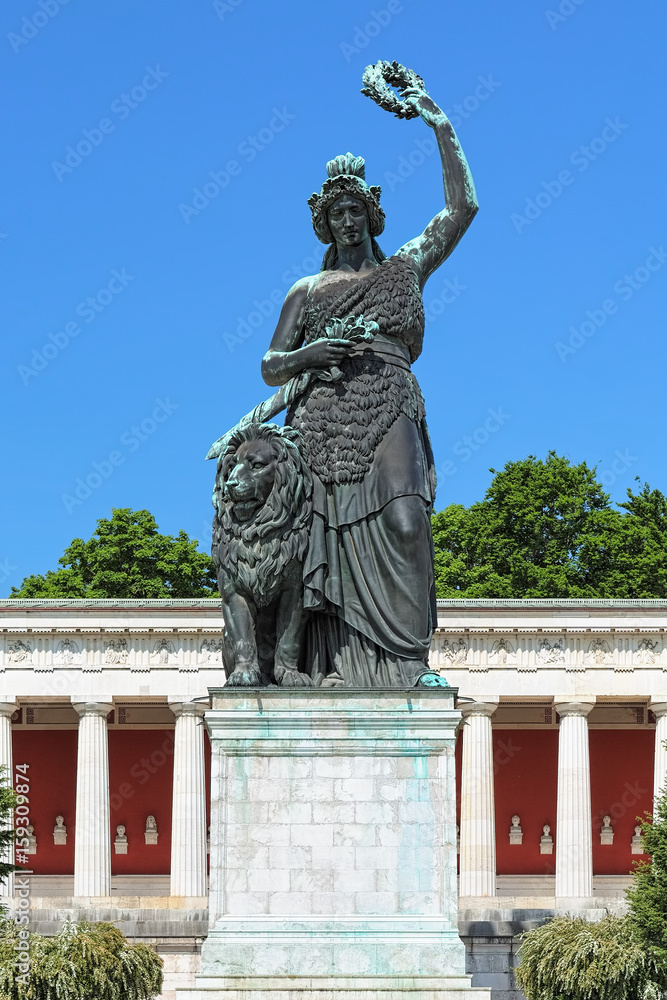
Statue of Bavaria in front of Ruhmeshalle (Hall of Fame) in Munich, Germany. The Ruhmeshale was
Unlike the hall of fame itself, the Bavaria statue follows a romantic Germanic design. In her upraised arm, she holds an oak wreath (and not a laurel wreath). She is glad in a bear fur, holds a sword and a lion stands right next to her. The perfect symbol for the well-fortified state of Bavaria. She was finished in 1850.

Bavaria Statue This enormous statue of Bavaria This enormo… Flickr
The Bavaria statue (German just 'Bavaria') is a bronze-cast statue of a female figure representing Bavaria's "secular patron saint", the Tellus (Mater) Bavarica ("goddess of the land of Bavaria"), located at the border of the Theresienwiese in Munich, Bavaria, Germany, where the Oktoberfest takes place each September. Artwork - Sculpture.

Visiting the Bavaria Statue in Munich How to get to the Ruhmeshalle
The Ludwig II of Bavaria statue stands tall as a symbol of Bavarian monarchy and its rich history. Positioned in the heart of Munich, this majestic statue pays homage to the beloved ruler who left an indelible mark on Bavaria. An Architectural Wonder This stunning statue is a marvel of architectural design.
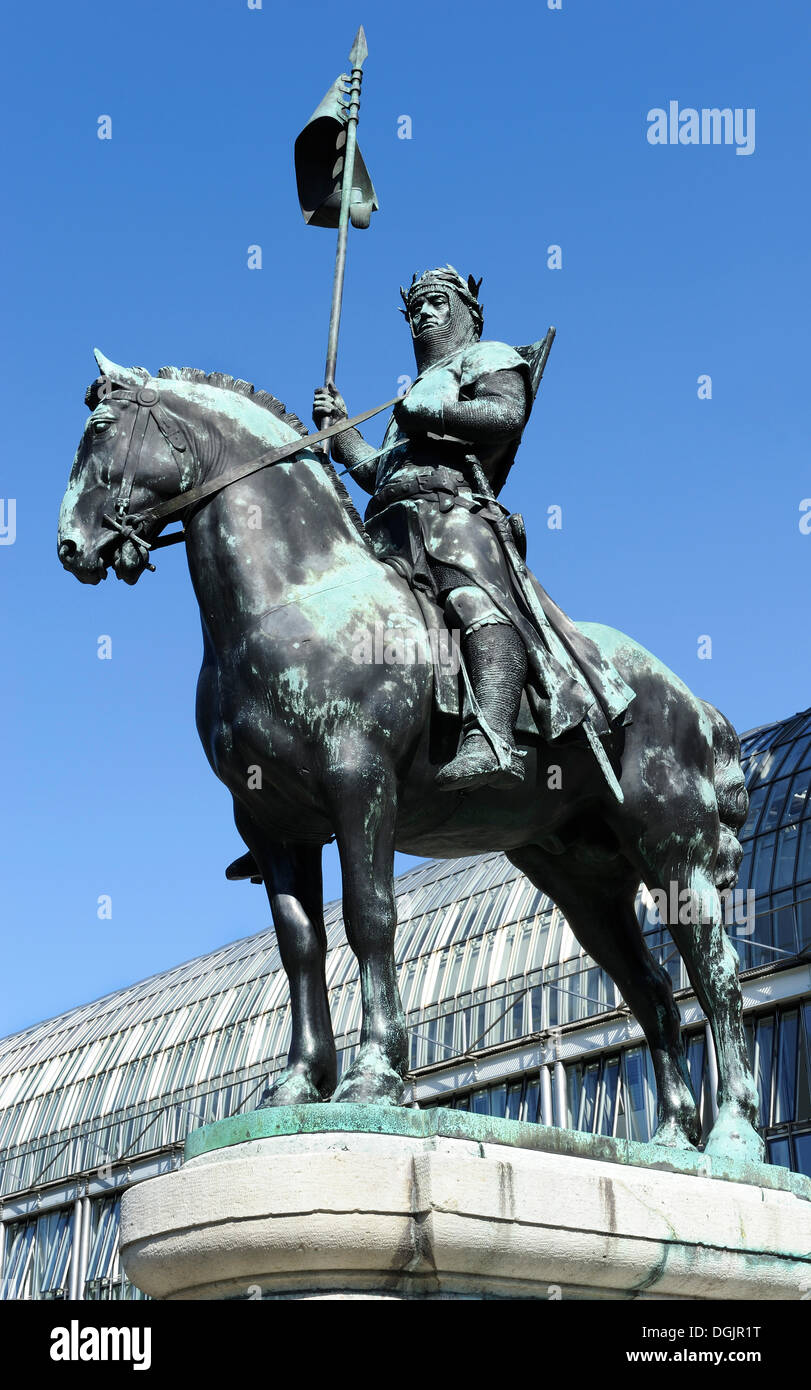
Equestrian statue of Otto of Wittelsbach, Duke of Bavaria, Bayerische Staatskanzlei, Bavarian
Bavaria was a kingdom from 1806 to 1918, and the city boasts some magnificent monuments that commemorate the sovereigns who ruled during this period. Each monument has a story to tell. Read on to discover their locations and what makes them so special. The Maximilian I Joseph monument: an unwilling sitter

Statue of bavaria stock photo. Image of mafrac14, germany 30402062
The Bavaria statue (German: Bavaria-Statue) is a bronze-cast statue of Bavaria 's allegory and secular patron, located in front of the Ruhmeshalle ("Hall of fame") close to the edge of the Theresienwiese in Munich, Germany, where the Oktoberfest takes place each year in September. Contents 1 Bavaria statue 2 Details

Statue of bavaria stock image. Image of place, theresienwiese 28495383
The Bavariastatue is an 18m-high Amazon in the Statue of Liberty tradition, oak wreath in her hand and lion at her feet. This iron lady has a cunning design that makes her seem solid, but actually you can climb via the knee joint up to the head for a great view of the Oktoberfest, which takes place in the surrounding grounds.
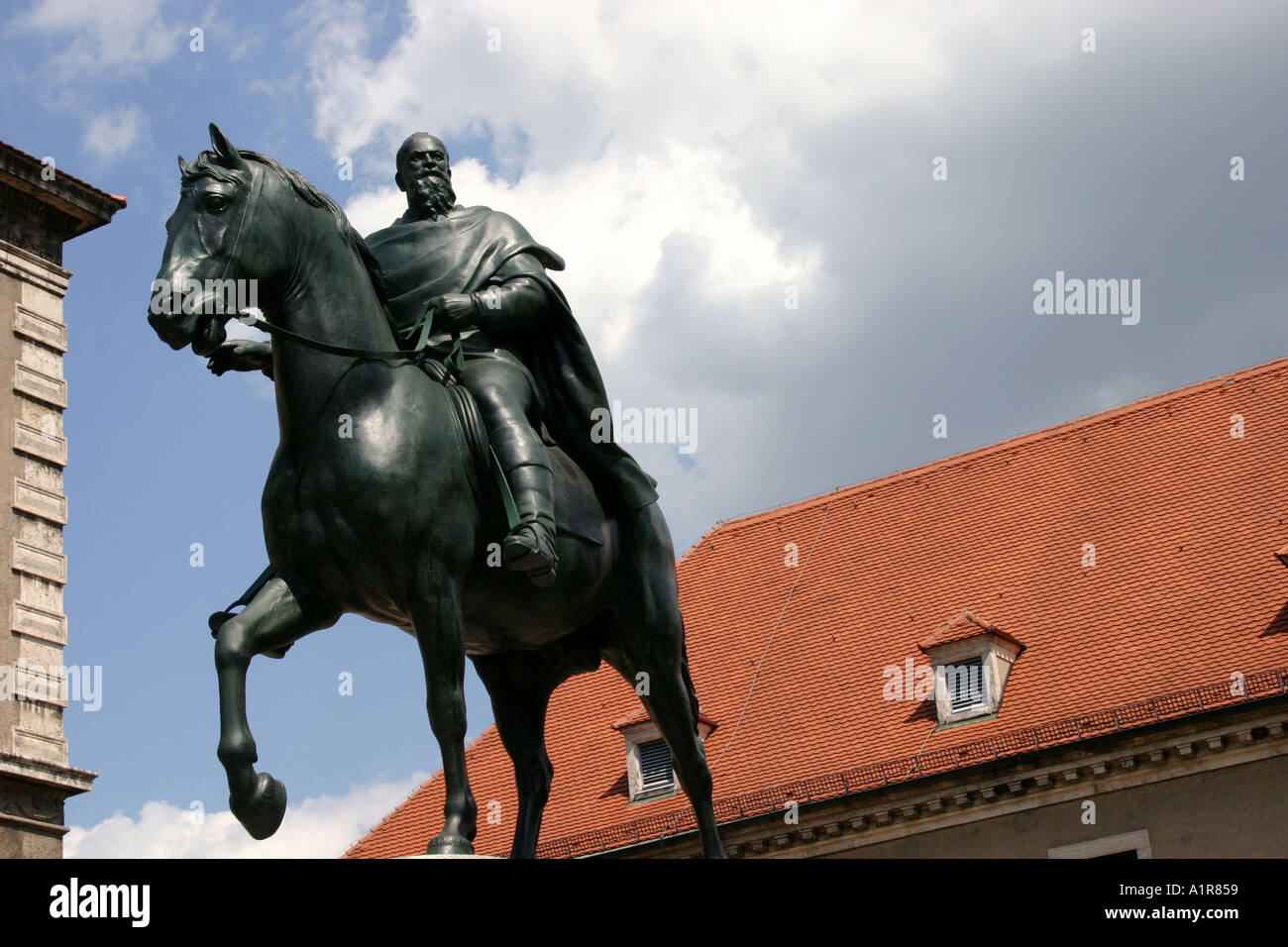
Statue in front of Bavarian National Museum Munich Bavaria Germany Stock Photo Alamy
The Bavaria Statue is the name given to the colossal well-known effigy of Lady Bavaria in Munich that surveys the western side of the Theresienwiese in Munich City. Known locally as Lady Bavaria, the Bavaria Statue Munich stands tall and proud and is a testament to all patriotic Bavarians.
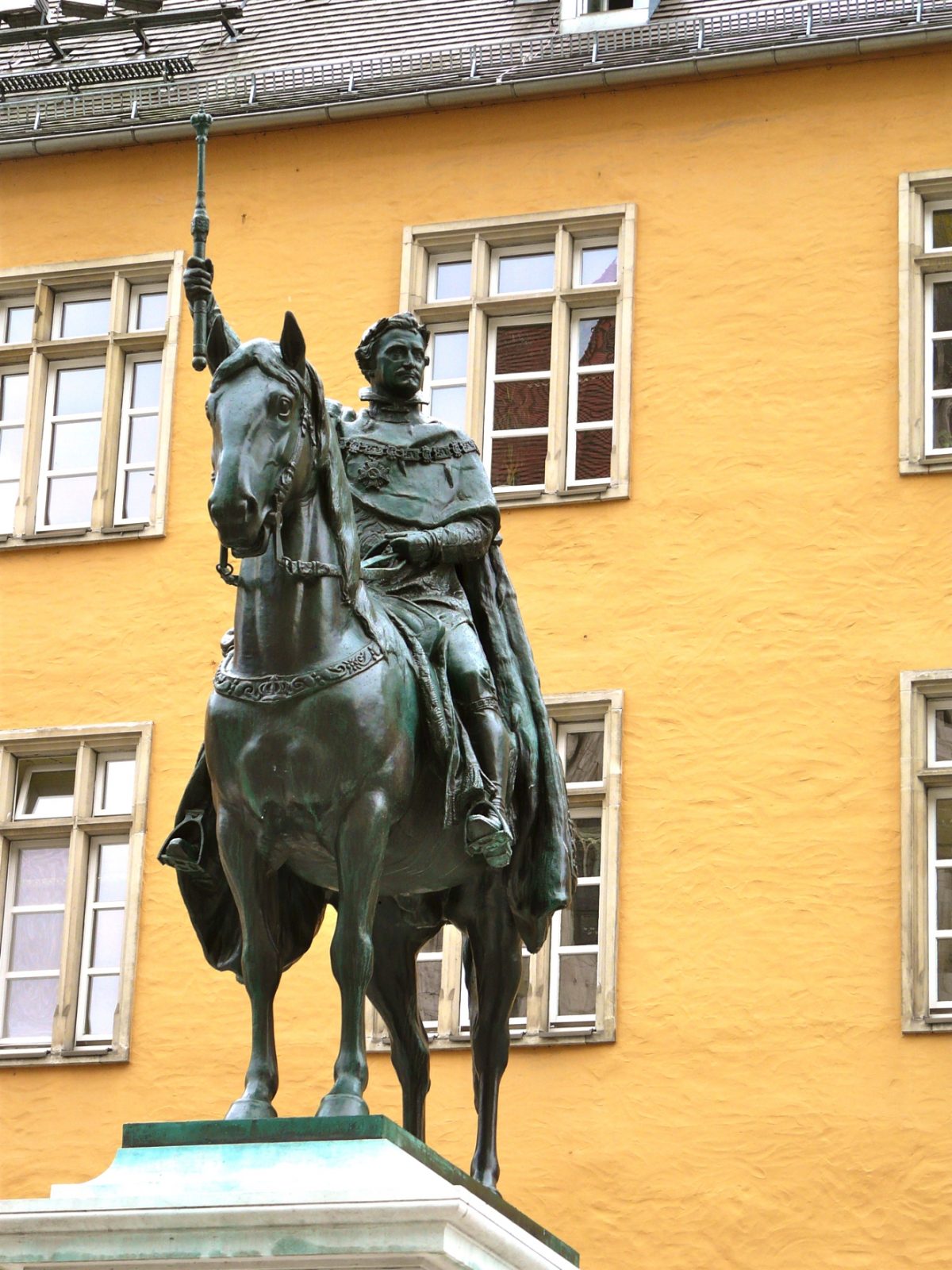
Equestrian statue of Ludwig I in Regensburg Germany
The Bavaria statue in front of the Hall of Fame (Ruhmeshalle) at Theresienhöhe is probably one of the most impressive monuments in southern Germany. This is the work of sculptor Ludwig Schwanthaler (1850) and was considered a monument masterpiece at that time.